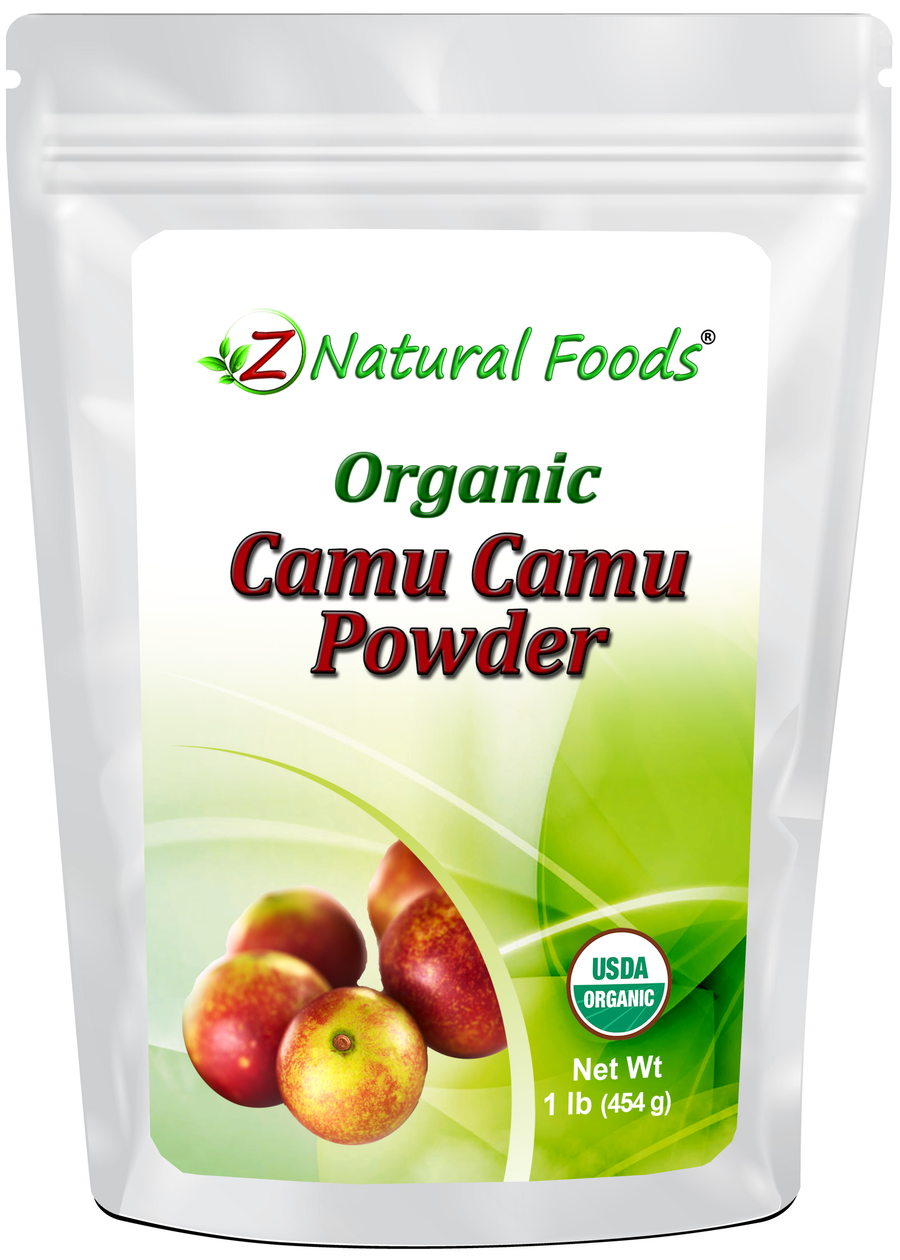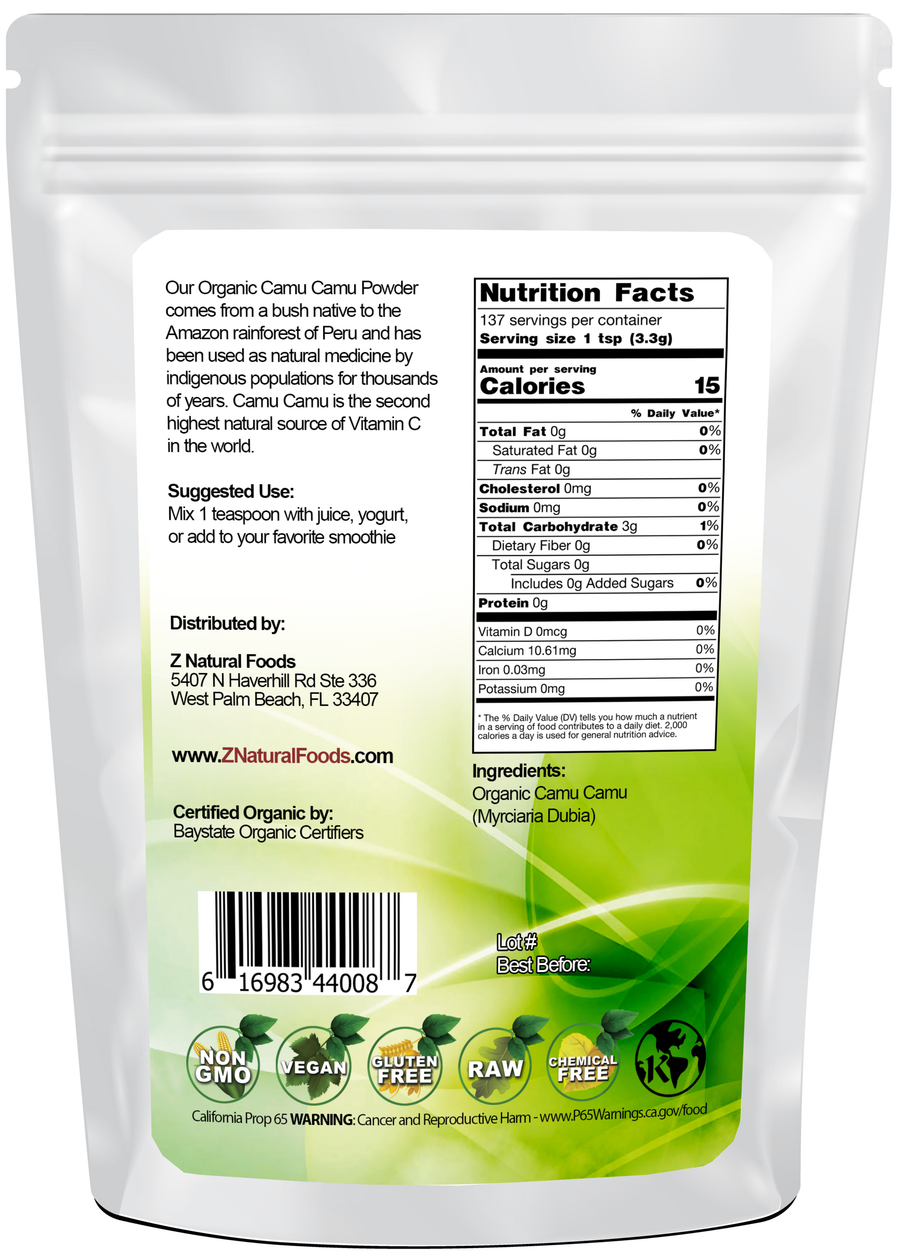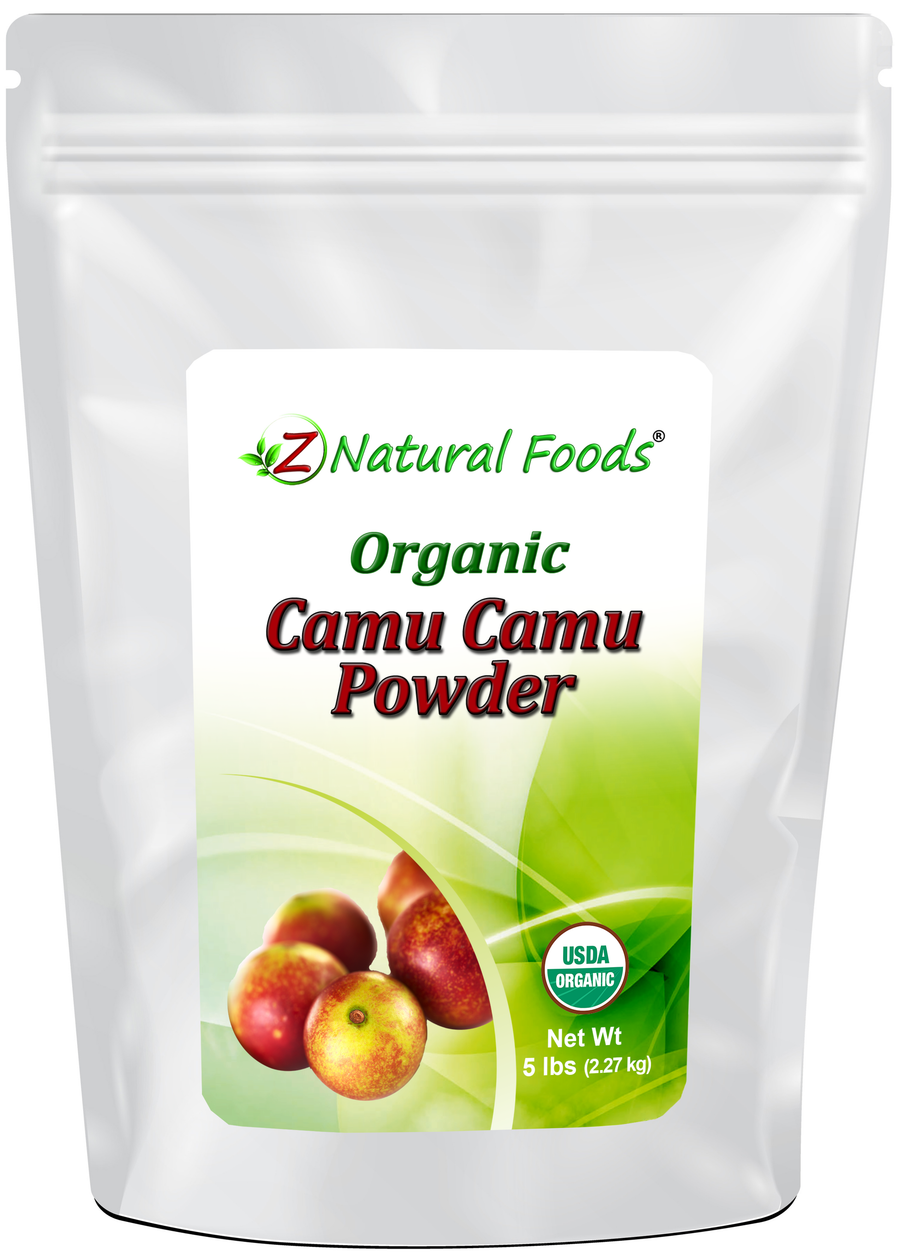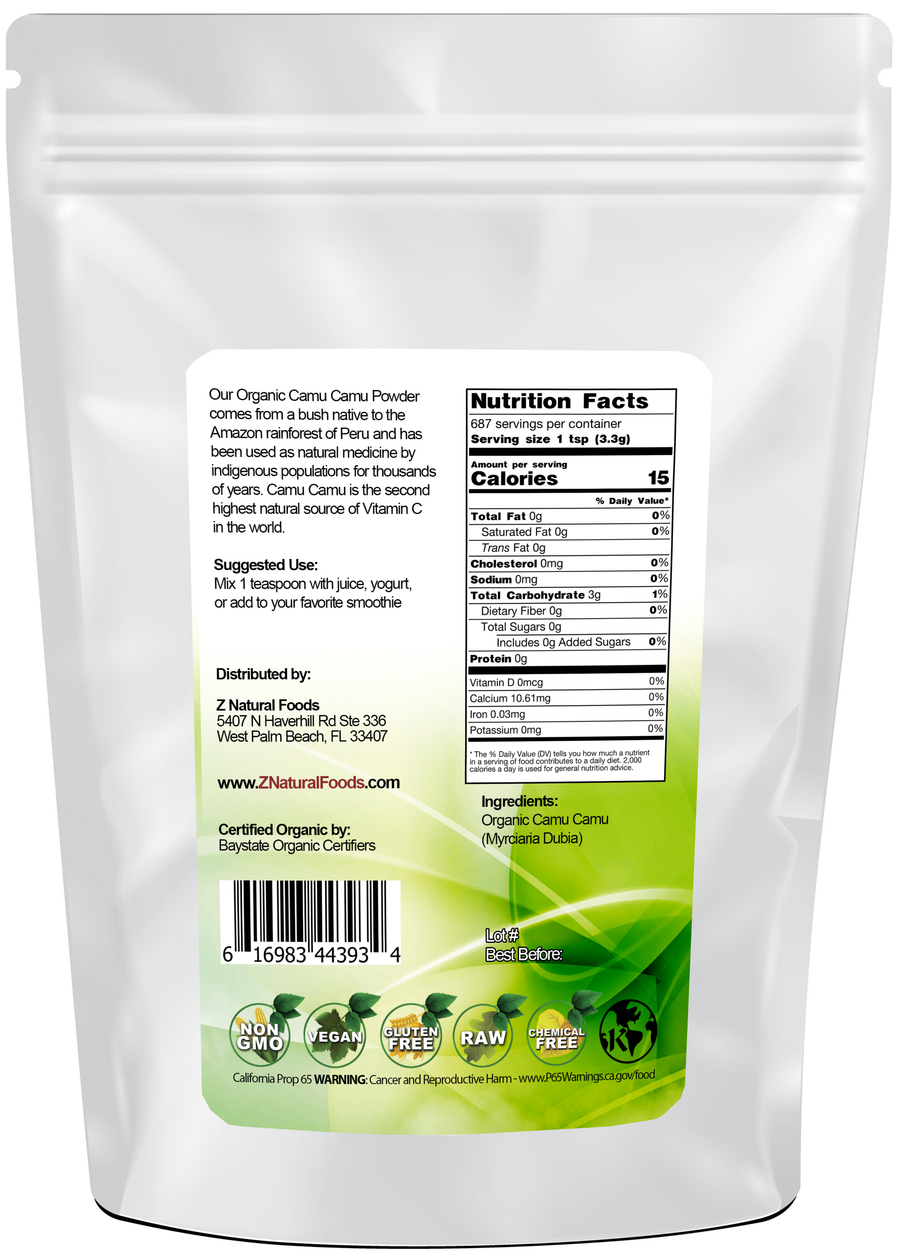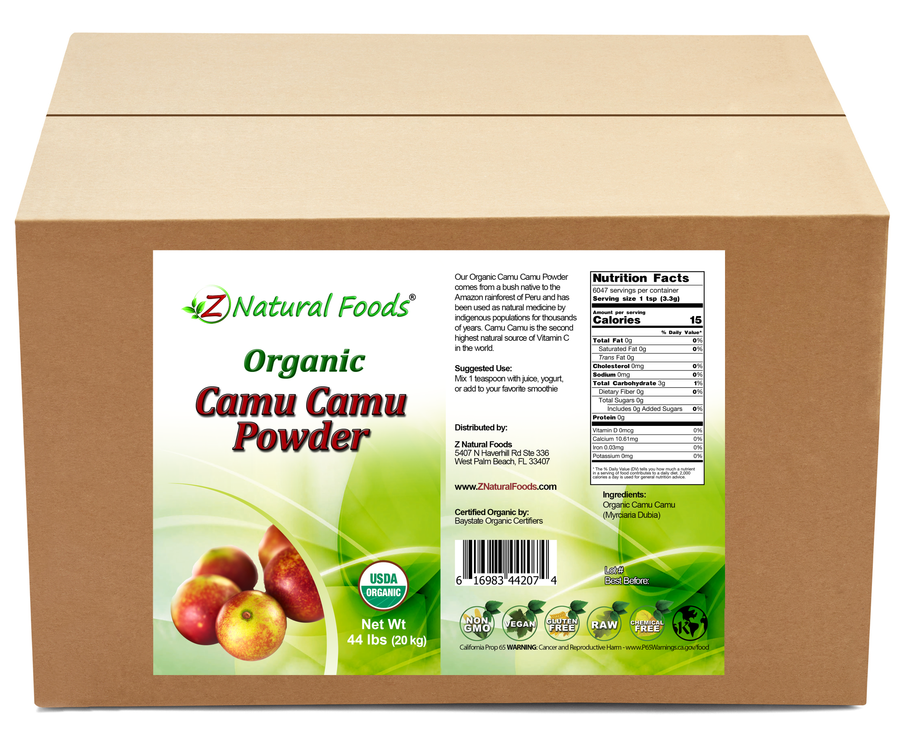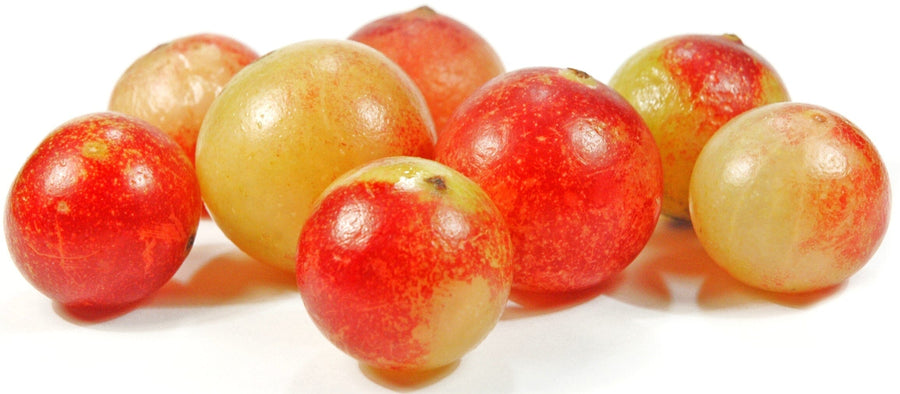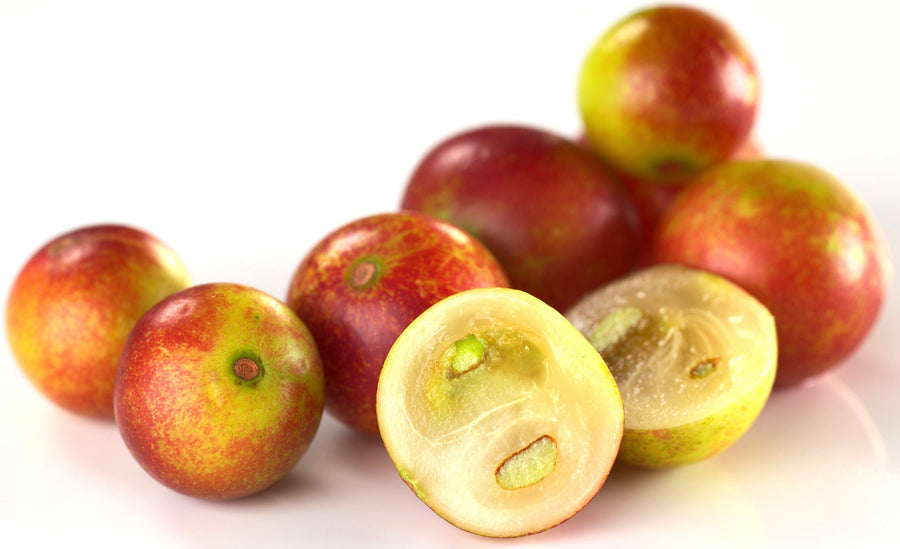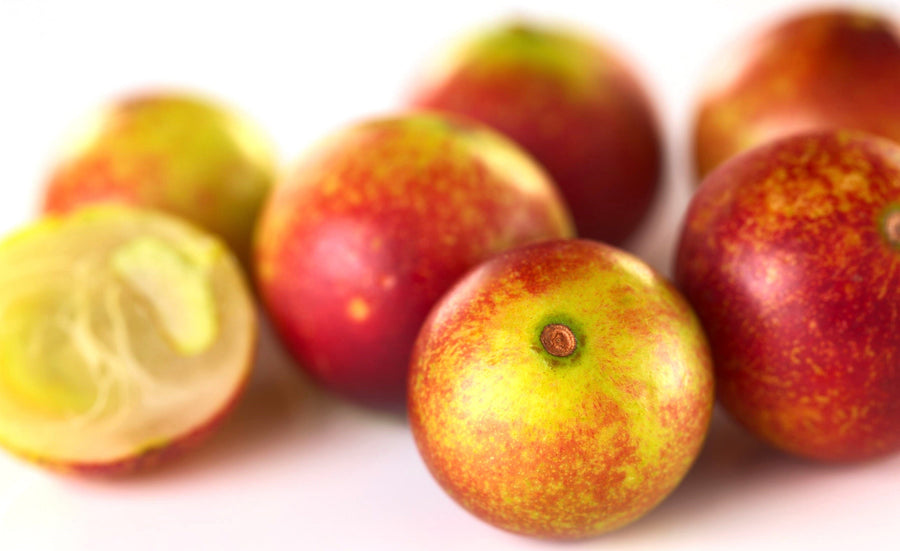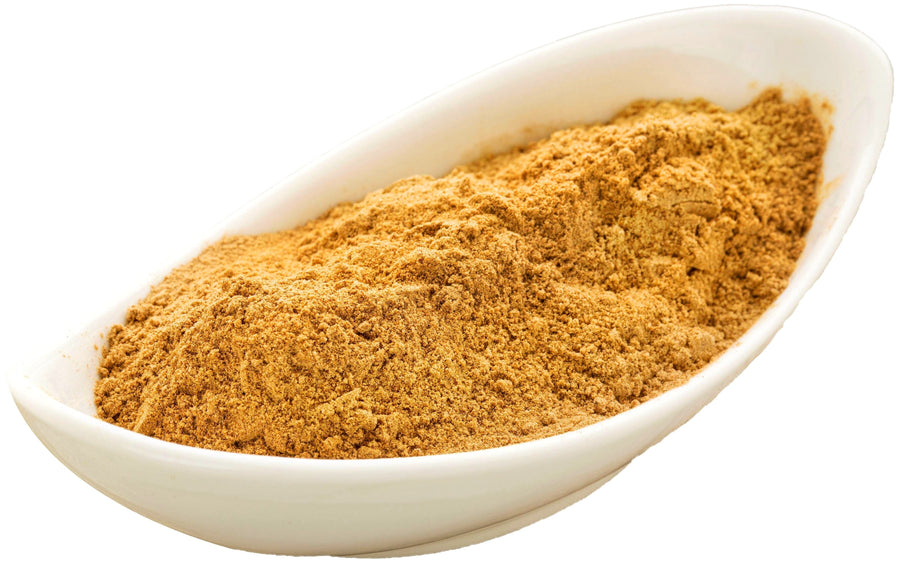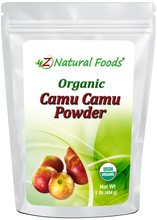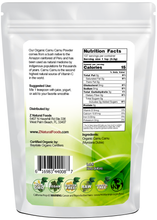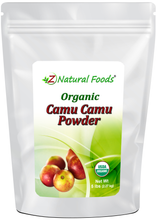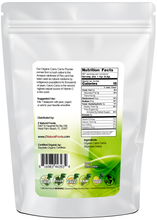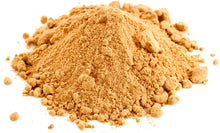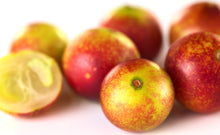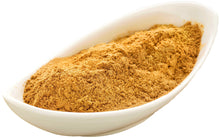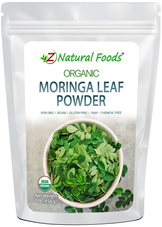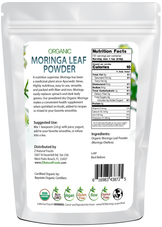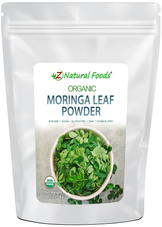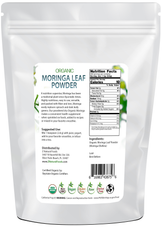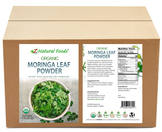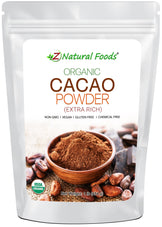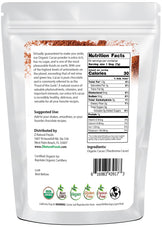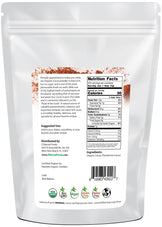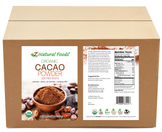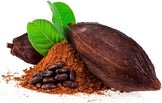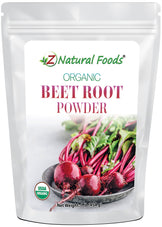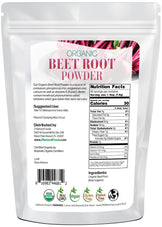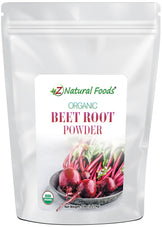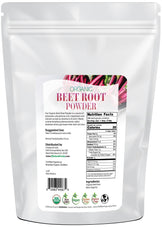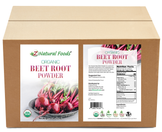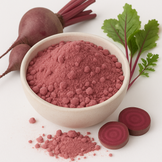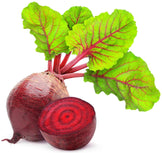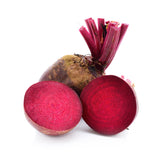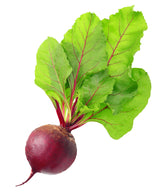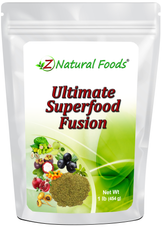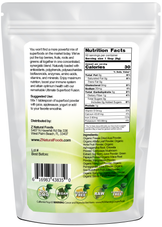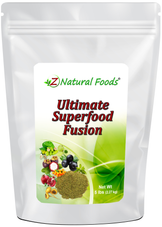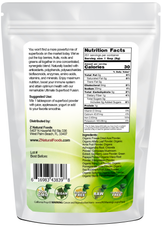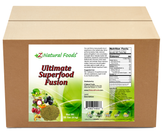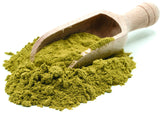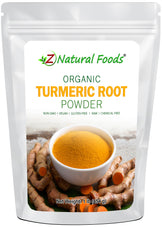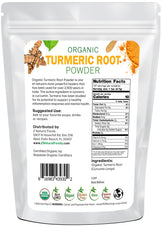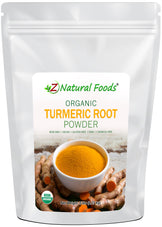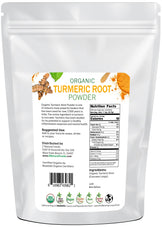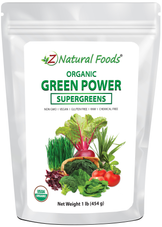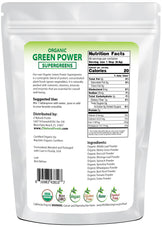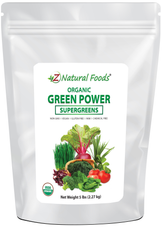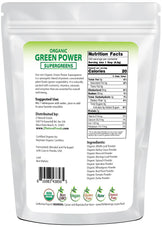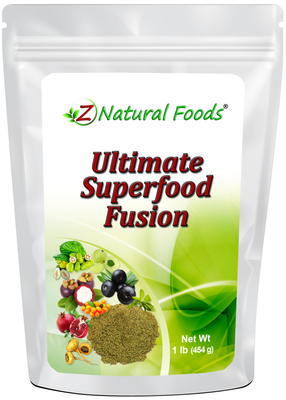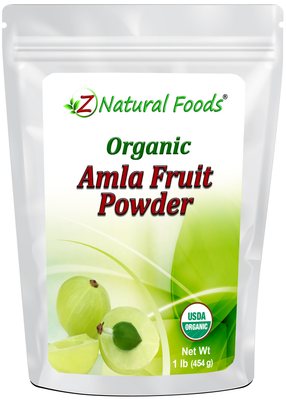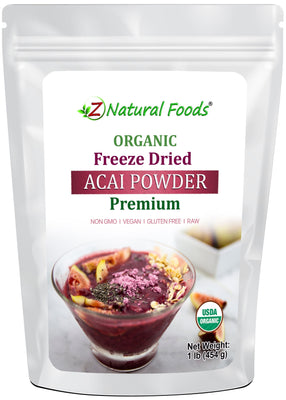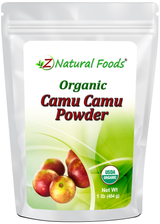About Product
Organic Camu Berry Powder is made from carefully dried and ground camu berries, known for their tart, tangy flavor and vibrant color. This versatile powder can be mixed into smoothies, juices, teas, and other recipes for a bold berry taste.
With its unique flavor profile and easy-to-use powdered form, organic camu berry powder adds both taste and variety to everyday creations. Convenient and shelf-stable, it’s a simple way to enjoy the essence of camu berries year-round.
How to Maintain Optimum Freshness
- This product is packaged in airtight stand-up, resealable foil pouches for optimum freshness.
- Once opened, push the air out of the pouch before resealing it to preserve maximum potency.
- Keep your powder in a cool, dark, dry place.
This product is 100% natural and minimally processed:
Taste, smell, texture, and color vary from batch to batch. Go here to learn why our products may naturally vary.
The important protections we take to bring you safe and nutritious superfoods:
Please go here to discover the essential steps we take to deliver fresh, quality nutrition.
Bulk Quantities?
Need to order a large quantity of our products? We are happy to help! Please get in touch with our Bulk department to discuss the details.
* Product packaging, pictures, and origin may vary.
Sources & References
References:
1. "The Plant List: A Working List of All Plant Species".
2. Peruvian Camu Camu fruit conquers Japan Percy Takayama, Living in Peru - Business, 12 February 2007. Accessed July 2012.
3. 3rd Party Research - Camu Camu Mama Camu.
4. Antioxidant compounds and antioxidant capacity of Peruvian camu camu (Myrciaria dubia (H.B.K.) McVaugh) fruit at different maturity stages. Rosana Chirinos, Jorge Galarza, Indira Betalleluz-Pallardel, Romina Pedreschi and David Campos, Food Chemistry, Volume 120, Issue 4, 15 June 2010, Pages 1019-1024, doi:10.1016/j.foodchem.2009.11.041
5. Justi, K. C., et al. Nutritional composition and vitamin C stability in stored camu-camu (Myrciaria dubia) pulp. Arch. Latinoam. Nutr. 2000 Dec; 50(4):405-8. Zanatta, C. F., et al. Determination of anthocyanins from camu-camu (Myrciaria dubia) by HPLC-PDA, HPLC-MS, and NMR. J. Agric. Food Chem. 2005 Nov 30; 53(24):9531-5. - See more at: http://www.mrcabbagehead.com/2008/05/28/camu-camu/#sthash.qP8g9zBw.dpuf
6. Wilson, LG (1975). "The clinical definition of scurvy and the discovery of vitamin C.". Journal of the history of medicine and allied sciences 30 (1): 40"“60. PMID 1094060.
7. Armstrong, Alexander (1858). "Observation on Navel Hygiene and Scarvy, more particularly as the later appeared during the Polar Voyaje". British and foreign medico-chirurgical review: or, Quarterly journal of practical medicine and surgery 22: 295"“305. http://books.google.com/?id=7VJYAAAAMAAJ&pg=PA295.
8. "Myrciaria dubia (Kunth) MCVAUGH "“ Myrtaceae". Dr. Duke's Phytochemical and Ethnobotanical Databases. http://sun.arsgrin.gov:8080/npgspub/xsql/duke/pl_act.xsql?taxon=1241. Retrieved 2009-09-21.
9.http://www.sciencedirect.com/science_ob=ArticleURL&_udi=B6T6R4XSTD9H5&_user=10&_coverDate=06%2F152F2010&_rdoc=1&_fmt=high&_orig=search&_sort=d&_docanchor=&view=c&_acct=C000050221&_version=1
10. Dr. James Duke's Ethnobotanical database: www.ars-grin.gov/duke/
11. Null, Gary. A Woman's Encyclopedia of Natural Healing, Seven Stories Press, New York, N.Y., 1997.
12. The Clinician's Handbook of Natural Healing,. Kensington Press, New York, N.Y., 1998
13. Camu-camu (Myrciaria dubia) database 1996. . Accessed 20 February 2008.
14.Farabee, M.J. 2007.Photosynthesis.<URL:http://www.emc.maricopa.edu/faculty/farabee/BIOBK/BioBookPS.html>. Accessed 5 April 2008.
15. Functional Food Ingredients/Spices 2001-2005. . Accessed 27 February 2008.
16. Heard, T.A. 1999. The role of stingless bees in crop pollination. Annual Review of Entomology (Vol. 44: 183-206). Accessed 5 April 2008.
17. Peters, C.M. et al. 1989. Oligarchic forests of economic plants in ammonia: Utilization and conservationof an important tropical resource. Conservation Biology (Vol. 3, Issue 4, 341-349). Accessed 21 March 2008.
18. Silva, C.T.C. and J.S. Andrade. 1997. Postharvest modifications in Camu-camu fruit (Myrciaria dubia Mc Vaugh) in response to stage of maturation and modified atmosphere. Acta Hort. (ISHS) 452: 23-26. Accessed 21 March 2008.
19. Suguino, E. et al. Vegetative propagation of camu-camu by intergeneric grafting in Myrtaceae Family. Pesq. agropec. bras., BrasÃlia, (Vol. 38 (Dec. 2003) 12, 1477-1482). Acessed 5 April 2008.
19. Tropical plant database 1996-2005 (Diseases & Conditions). . Accessed 20 February 2008.
20.What is Camu camu? 2008.<URL:http://www.wondrousherbs.com/CamuCamuFacts.html>. Accessed 27 February 2008.
21. Zanatta, C.F. and A.Z. Mercadante. 2007. Carotenoid composition from the Brazilian tropical fruit camu-camu (Myrciaria dubia). Food Chemistry (Vol. 101, Issue 4, 1526-1532). Accessed 21 March 2008.
22. http://www.naturalnews.com/report_camu_camu_0.html
23. http://www.wholeworldbotanicals.com/herbal_camucamu.html
24. http://camucamu.org/
25. http://www.naturalnews.com/Report_Camu_Camu_1.html
26. University of Bonn, Institute of Nutrition and Food Sciences, Germany
27. Federal University of Para, Food Chemistry, Brazil
28. Instituto Nacional de Pesquisa da Amazonia (INPA), Brazil (Roberta B. Rodrigues 1, Menelaos Papagiannopoulos 1, Jos'e Guilherme S. Maia 2, Kaoru Yuyama 3, Friedhelm Marx 1)
29. Zanatta CF, Cuevas E, Bobbio FO, Winterhalter P, Mercadante AZ.Department of Food Science, Faculty of Food Engineer, State University of Campinas, UNICAMP, Post Office Box 6121, Campinas, São Paulo, 13083-970, Brazil. J Agric Food Chem. 2005 Nov 30;53(24):9531-5.
30. Ueda H, Kuroiwa E, Tachibana Y, Kawanishi K, Ayala F, Moriyasu M. Kobe Pharmaceutical University, Higashinada-ku, Kobe, 658-8558 Japan. Phytomedicine. 2004 Nov;11(7-8):652-6.
31. Justi KC, Visentainer JV, Evelázio de Souza N, Matsushita M. Department of Chemistry, State University of Maring, Maringá, Paraná, Brazil. Arch Latinoam Nutr. 2000 Dec;50(4):405-8.
32. Franco MR, Shibamoto T. Faculdade de Engenharia de Alimentos, UNICAMP, Campinas-SP, CP 6121, CEP 13081-970, Brazil. franco@fea.unicamp.br. J Agric Food Chem. 2000 Apr;48(4):1263-5.
33. Dib Taxi CM, de Menezes HC, Santos AB, Grosso CR. Department of Food Technology, Faculty of Food Engineering, State University of Campinas (UNICAMP), CP 6121, 13083-970, Campinas, SP, Brazil. tinadib@hotmail.com. J Microencapsul. 2003 Jul-Aug;20(4):443-8.
34. http://www.naturalnews.com/043134_vitamin_C_intravenous_infusions_COPD.html
35. http://www.eurekalert.org/pub_releases/2013-11/aps-vcc110713.php
36. http://ajpregu.physiology.org/content/ajpregu/early/2013/09/20/ajpregu.00360.2013.full.pdf
37. http://www.vitamincfoundation.org/NaturalC.pdf
38. http://lpi.oregonstate.edu/infocenter/vitamins/vitaminC/vitCform.html
39. Gary Null, Ph.D., a nationally known nutritionist and researcher. Excerpted and adapted by Herbs America from his Clinician's Handbook of Natural Healing, (1998).
* Reviews & Success Stories Disclaimer
Product reviews solely reflect the views and opinions expressed by the contributors and not those of Z Natural Foods. Z Natural Foods does not verify or endorse any claims made in these reviews. Statements have not been evaluated by the FDA and are not intended to diagnose, treat, cure, or prevent any disease or health condition.REFERRAL PROGRAM
Share your personal link to your friends and welcome them with rewards. Claim yours when they make their first purchase.

GIVE
$10 off discount

GET
$10 off discount
